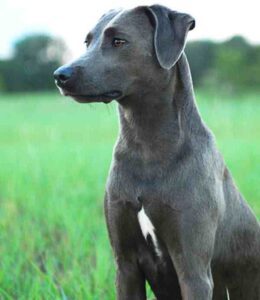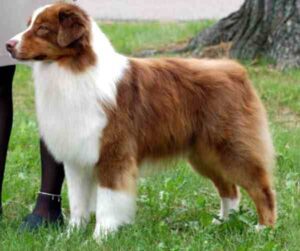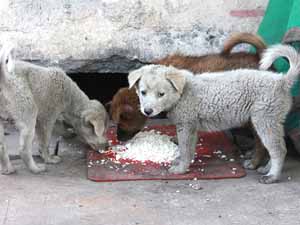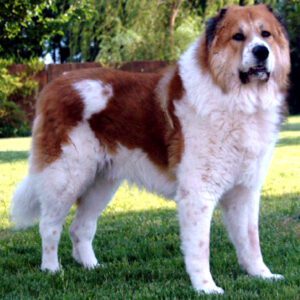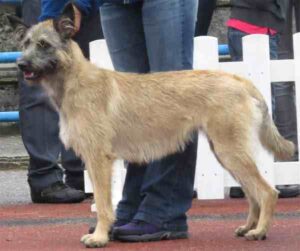The Artois Hound is a rare breed of dog. It is a scent hound and a descendant of the Bloodhound. It is a large breed and also known by some other names such as Briquet, Picard and Chien d’Artois. It is a well constructed dog, muscled and not too long, giving the impression of strength and energy.
The Artois Hound breed was originated from France. It was formerly named Picard, was much appreciated in hunting at the time of Henry IV of France and Louis XIII of France, and much sought after.
Selincourt already made much of it, wondering and amazed to see these dogs pulling a hare which had passed by one hour ago in dry weather. Le Couteulx de Canteleu, in Manuel de Vénerie Française (1890), (Manual of French Hunting – 1890), praises also the Artois hound.
He reports that the artesian breed of his time was crossbred and difficult to find pure but, in spite of that, it still remained one of the best breeds for hare hunting. Northern France, bordering the English Channel, consists of the historical regions of Artois Hound. Hounds from this region stem from some of the earliest types.
The Artois Hound was a favorite by the 17th century. The Prince Alexandre de Gray wrote to the Prince de Galle, in 1609, of his intention to “send a pack of little d’Artois dogs to the king …” In fact, this small French hound may have contributed to the formation of the Beagle in England.
By the 19th century it became popular among French hunters to avail themselves of the dogs from the British Isles. With the importation of many British types, the inevitable crossbreeding resulted in the deterioration of the pure Artois Hounds.
Crossing also took place with the taller, more elegant, longer, scroll-eared hounds called Normands (now extinct). During the 19th century, only the packs kept at Chantilly and those of the Prince de Conde retained the ancient type.
In the 1880s, Ernest Levair and his cousin, M. Therouanne, began a 20-year effort to breed the original d’Artois, removing the last of the Normand blood.
By the middle of the 20th century the breed had nearly disappeared, however in the 1970s a few aficionados , in particular Mr. Audrechy, (of Buigny les Gamaches in the Somme), decided to reconstitute the breed from a few remaining specimens which they located after along search. Thanks to their efforts the modern day Artois hound closely resembles the original. There are now about 500 dogs registered in their stud books, making a strong comeback since 1975.[1]
Artois Hound Characteristics
The Artois Hound is a well constructed dog, muscled and not too long, giving the impression of strength and energy. It has a large, strong head, a medium-length back and a pointed tail that tends to be long and sickle-shaped. Their ears are set at eye level. They have large prominent eyes and quite thick lips.
Skin of the Artois Hound is quite thick. It’s hair is short, thick and quite flat. The coat pattern is dark fawn tri-colored, with a mantle or in large patches. The head is generally fawn, sometimes with a black overlay. It’s main colors being tan and black, and white in any combination.
Average height of the mature Artois Hound is between 21 and 23 inches at the withers. And average live body weight of the mature dog is between 28 and 30 kg.
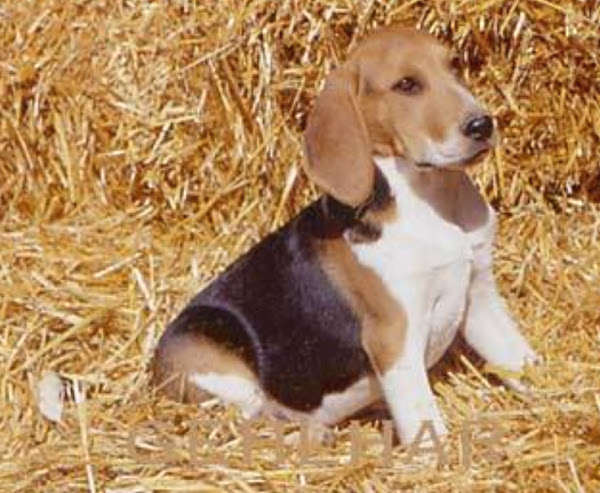
Temperament
The Artois Hound is an energetic dog that is brave and loyal. It is calm and well balanced, although it has a large amount of endurance. It is a moderate sized dog that will feature the best characteristics of the scenthounds.
The Artois Hound has powerful sense of smell, and it is fast and independent. The breed was actually bred to hunt rabbits, and they are proficient at this task.
These dogs need to be trained by owners who are consistent. They are affectionate and loving to those that care for them. They are happiest when on the trail of a good scent, like all other scent hounds.
Lifespan
Average lifespan of the Artois Hound is about 13 years.
Feeding
How much a mature dog eats depends on it’s size, age, build, metabolism and activity level. Dogs are individuals, just like people, and they don’t all need the same amount of food.
The Artois Hound is a medium to large sized breed. So, their diet should be formulated for a medium to large sized breed with average energy and exercise needs. You can consult with your vet for better recommendations.
Caring
Taking good care of the animals is very important for raising Artois Hounds. They need extensive amounts of exercise. Without proper exercise, the dogs could become problematic for their owners.
These dogs should be taken on walks daily, and the breed is great for healthy people who love to jog and hike daily. While the breed can live in an apartment, it may perform better in a small yard. It is very important to give these dogs lots of space to move around in.
The Artois Hound does not require a large amount of grooming. The Artois’ smooth short-haired coat is easy to look after. Owners will simply want to make sure the coat is brushed on a consistent basis. And they should be given baths only when they need it.
Health
The Artois Hounds are generally healthy. But like all other dog breeds, they are also prone to certain health conditions. Their common health problems include hip dysplasia and ear infections. Always try to keep good contact with a vet in your area.
| Breed Name | Artois Hound |
| Other Names | Briquet, Picard and Chien d’Artois |
| Breed Size | Medium to large |
| Height | 21 and 23 inches at the withers |
| Weight | Between 28 and 30 kg |
| Good as pets | Yes |
| Climate Tolerance | All climates |
| Color | Main colors being tan and black, and white in any combination |
| Lifespan | About 13 years |
| Good for children | Yes |
| Rarity | Common |
| Country of Origin | France |

